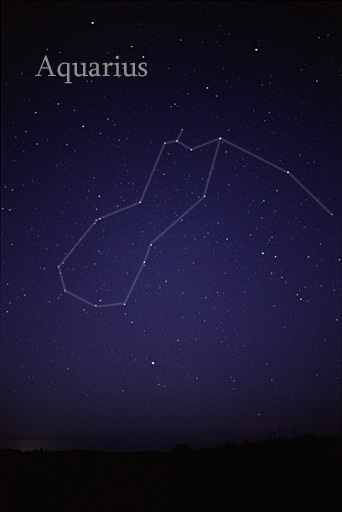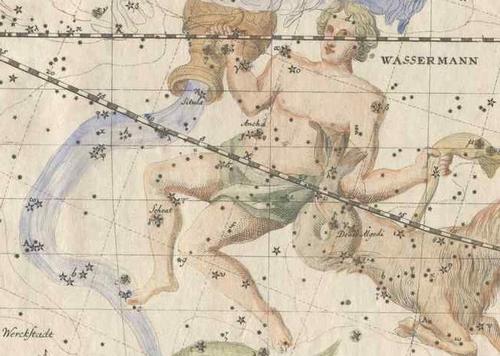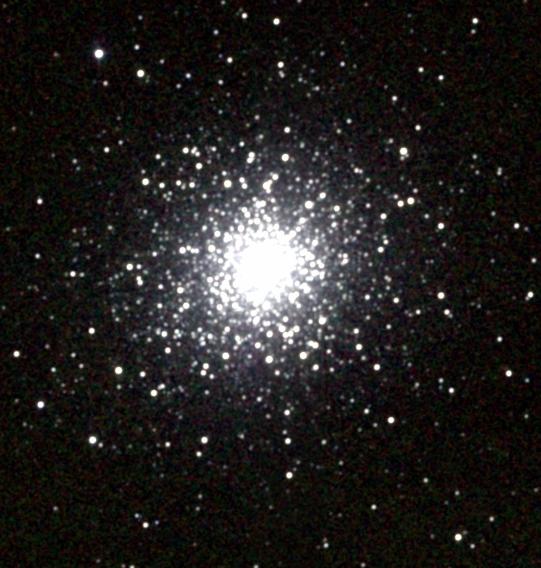AQUARIUS

Till Credner - Own work, AlltheSky, CC BY-SA 3.0, wikimedia

Aquarius_constellation_map.png: Torsten Bronger derivative work: Kxx (talk) - Aquarius_constellation_map.png, CC BY-SA 3.0, wikimedia
Aquarius is not a very bright constellation of the zodiac visible in boreal skies at the end of summer, between Capricorn and Pisces, which are also not very bright constellations, located to the west and to the east of Aquarius.

Public domain, wikimedia
For many, Aquarius recalls the myth of Ganimede, the cup bearer for the Olympian gods, who is kidnapped by Zeus. In the skies he is seen as a youth pouring water from a pitcher toward the constellation Austral Pisces represented by the star Fomalhaut.
Sadalsuud: is the beta star, but in fact it is the brightest star in the constellation. It, too, is a yellow supergiant, which means it is in a phase of transition to become a red supergiant. It is about 540 light-years from us.
The constellation is rich in deep sky objects, two in particular are: the globular cluster M2 and the Helix Nebula.

This image is from the Two Micron All Sky Survey (2MASS) project.
here it says: "The images and image mosaics in the various Galleries are released into the public domain. 2MASS kindly requests acknowledgement in one of the following forms, the longer of which is preferred." Atlas Image [or Atlas Image mosaic] obtained as part of the Two Micron All Sky Survey (2MASS), a joint project of the University of Massachusetts and the Infrared Processing and Analysis Center/California Institute of Technology, funded by the National Aeronautics and Space Administration and the National Science Foundation. Atlas Image [or Atlas Image mosaic] courtesy of 2MASS/UMass/IPAC-Caltech/NASA/NSF., Public domain, wikimedia
M2 is a big globular cluster, easy to see because it’s a little north of the line that joins the alpha and beta stars. It is 33,000 light-years from us and is thought to be made up of more than 150,000 stars.
.jpg)
The HST data are from proposal 9700. Processed images may be obtained from the Helix MAST web site.
The Hubble Helix Team includes M. Meixner, H.E. Bond, G. Chapman (STScI), Y.-H. Chu (U. Illinois, Urbana-Champaign), P. Cox (Institut d'Astrophysique Spatiale, France), W. Crothers, L.M. Frattare, R.Gilliland (STScI), M. Guerrero R. Gruendl (U. Illinois, Urbana-Champaign), F. Hamilton, (STScI), R.Hook (STScI/ESO), P. Huggins (New York Univ.), I. Jordan, C.D. Keyes, A. Koekemoer (STScI), K.Kwitter (Williams College), Z.G. Levay, P.R. McCullough, M. Mutchler, K. Noll (STScI), C.R. O'Dell (Vanderbilt University), N. Panagia, M. Reinhart, M. Robberto, K. Sahu, D. Soderblom, L. Stanghellini, C. Tyler, J. Valenti, A. Welty, R. Williams (STScI).
The CTIO data were taken by C.R. O'Dell (Vanderbilt University) and L.M. Frattare (STScI). The science team includes C.R. O'Dell (Vanderbilt University), P.R. McCullough and M. Meixner (STScI).
Credit: NASA, ESA, and C.R. O'Dell (Vanderbilt University)News Release Number: STScI-2004-32 - Image, complementary information, Public domain, wikimedia
NGC 7293 is the Helix Nebula that is, the gaseous residue of the final phases of evolution of a
Southern Hemisphere: Aquarius is easier to see in the Southern Hemisphere at the same time of the year as in the Northern Hemisphere. At the southern middle latitudes at the end of October right after sunset we find it high on the northern horizon.